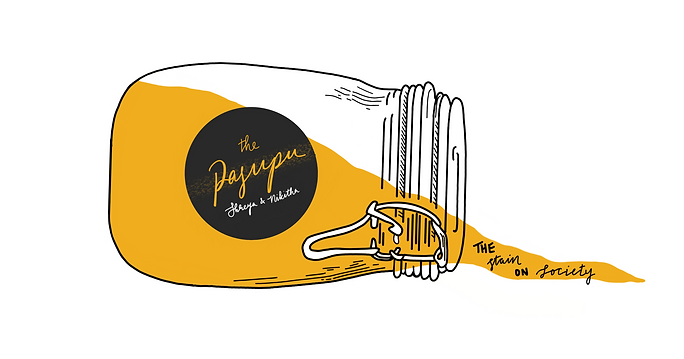
Navratri is a Hindu festival that is celebrated in the Hindu calendar month of Ashwin, around September or October. “Nav” means nine and “ratri” means night, which is why this festival is celebrated for nine nights. Navratri is a celebration of good over evil and honors the divine Goddess Durga who defeated the demon king Mahishasura in a battle. This year, Navratri starts on October 17th and ends on October 26th. During each day of Navratri a different avatar of Goddess Durga is worshipped.
They are:
-Goddess Shailputri (Day 1)
-Goddess Brahmacharini (Day 2)
-Goddess Chandraghanta (Day 3)
-Goddess Kushmanda (Day 4)
-Goddess Skandamata (Day 5)
-Goddess Katyayani (Day 6)
-Goddess Kaalratri (Day 7)
-Goddess Mahagauri (Day 8)
-Goddess Siddhidatri (Day 9)
Legend has it that demon king Mahishasura was granted immortality by Lord Brahma, with a condition that he could only be defeated by a woman. Mahishasura attacked all three spheres, earth, heaven and hell, but nobody could defeat him. Then, Lord Brahma, Lord Vishnu, and Lord Shiva combined their powers to create Goddess Durga. Mahishasura and Goddess Durga fought during a fifteen day battle, during which the demon king kept changing his form to confuse the goddess. When Mahishasura took the form of a buffalo, Goddess Durga stabbed him with her trishula (trident). The name of the day Mahishasura was killed is known as Mahalaya.
During this Navratri many families and friends come together to celebrate this festival as per their tradition. Navratri is celebrated in many different ways throughout India.
South India:
In the southern state of Tamil Nadu, Dussehra celebrations begin nine days before Dussehra. In this region, these nine holy days are dedicated to the worship of the three main deities of Hinduism. Goddess Lakshmi is worshipped in the first three days, as she is said to be the best of wealth and prosperity, while Saraswati is prayed for the next three days, which is called the dualism of knowledge and art. The last three days are dedicated to the reverence of Mother Goddess, known as Shakti, Durga. In the states of Tamil Nadu, Andhra Pradesh and Karnataka, miniature statues and beautiful tables of dolls are set up in artificial stages in homes, traditionally known as “Bommai Kolu” or “Golu.”

Eastern India:
The last five days of Navratri are celebrated as Durga Puja in West Bengal, north-eastern part of India. Devi Durga is shown with various weapons in her hand, riding on a lion. Lion signifies the dharma, the will power, while the weapons denote the focus and severity needed to destroy the negativity in our minds. Exquisitely crafted and decorated life-size clay idols of the Goddess Durga depicting her slaying the demon Mahishasura are set up in temples and other places. These idols are then worshipped for five days and immersed in the river on the fifth day.
North India:
In North India, these nine days are filled with special pujas, yagnas, homas, fasting, meditations, silence, singing and dancing honoring Mother Divine, her entire creation- all forms of life, all forms of art, music and knowledge. She is worshipped as the savior of mankind from ignorance and all forms of evil. In the north, the custom of giving gifts on Navratri is rather common. These could be sweets, Indian clothes for both men and women, and also, something useful for the house.
West India:
In Western India, particularly in the state of Gujarat, Navratri is celebrated with the famous Garba and Dandiya-Raas dance. Garba is a graceful form of dance, wherein women dance gracefully in circles around a pot containing a lamp. The word ‘Garba’ or ‘Garbha’ means womb, and in this context the lamp in the pot symbolically represents life within a womb. Besides the Garba is the Dandiya dance, in which men and women participate in pairs with small, decorated bamboo sticks, called dandiyas in their hands. At the end of these dandiyas are tied tiny bells called ghungroos that make a jingling sound when the sticks hit one another. The dance has a complex rhythm. The dancers begin with a slow tempo, and go into frenzied movements, in such a manner that each person in a circle not only performs a solo dance with his own sticks, but also strikes his partner’s dandiyas in style!
In the North and West, Navratri is celebrated to recognize the victory of Rama over the “Villain” Ravana. Many people reenact the episodes of Rama and Ravana to visually learn about the battle between the two. Other celebrations include lighting large figures of Ravana on fire and stuffing figures of him with fireworks.
And of course, we know in the West that usually this celebration consists of attending a Garba night. However, it’s important that we all learn more about South Indian celebrations of Navratri, as they aren’t as popular as Garba. India is so diverse, even with its interpretations and celebrations, that it's essential that all of us come together to learn about the 9 nights of Navratri!
Whether you’re dancing the night away at a Garba, or admiring idols on a Kolu, please stay safe during this time!
Come back next week for our next post on Mental Health!


Comments